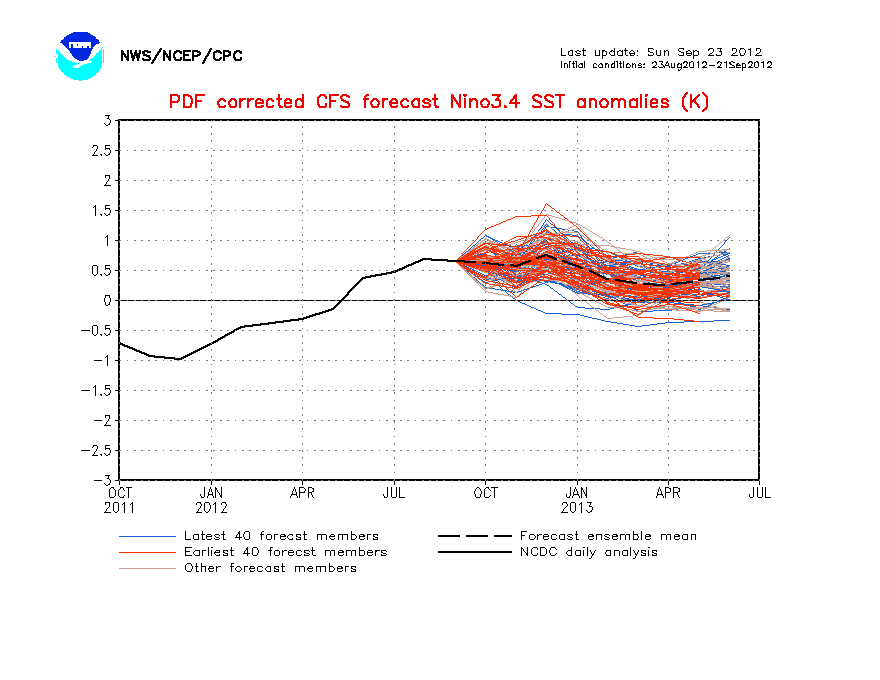La Nina has transitioned to ENSO-neutral (La Nada) and has a 30% chance* of becoming "El Nino Conditions" later this summer. 'Conditions' is not a full-blown El Nino, even if the Sea Surface Temps meet the definition because of the requirement for three overlapping three month periods of 'Conditions' before a full-blown El Nino is declared. The El Nino would bring lower temps to the East Cost in late summer/autumn and reduce the chances of August-September heat waves
Here's MarketWatch's The Tell blog:
Is this the bottom for natural gas?
I like Myra's writing on commodities. In this case I wanted to memorialize the danger of having the Chief Global Economist of anybody tell you what the weather is going to do.April 16, 2012, 1:02 PMFutures prices for natural gas have languished at their lowest levels in more than a decade, falling below $2 per million British thermal units last week, but economists at Capital Economics don’t expect prices to stay this low for long.
The bulk of the decline in U.S. natural gas prices can be explained by the surge in supply, said Julian Jessop, chief global economist at Capital Economics, in a note. “But the further fall in the last few weeks, taking prices below $2, is largely due to the exceptionally mild weather in North America, which has cut demand.”
Looking ahead, however, “more normal seasonal temperatures could therefore be sufficient to return the price of U.S. natural gas to around $3 over the summer,” he said.
After that, Jessop expects “more fundamental shifts in both supply and demand to lift prices to $4 by the end of 2012.”
At last check, natural gas for May delivery NGK12 +0.92% was up 1.3% at $2.01 per million BTU on the New York Mercantile Exchange, after closing Friday at $1.98.
–Myra Saefong
Futures 1.968 after touching 1.948 yesterday.
*Here are the SST anomaly model runs, from NOAA:
